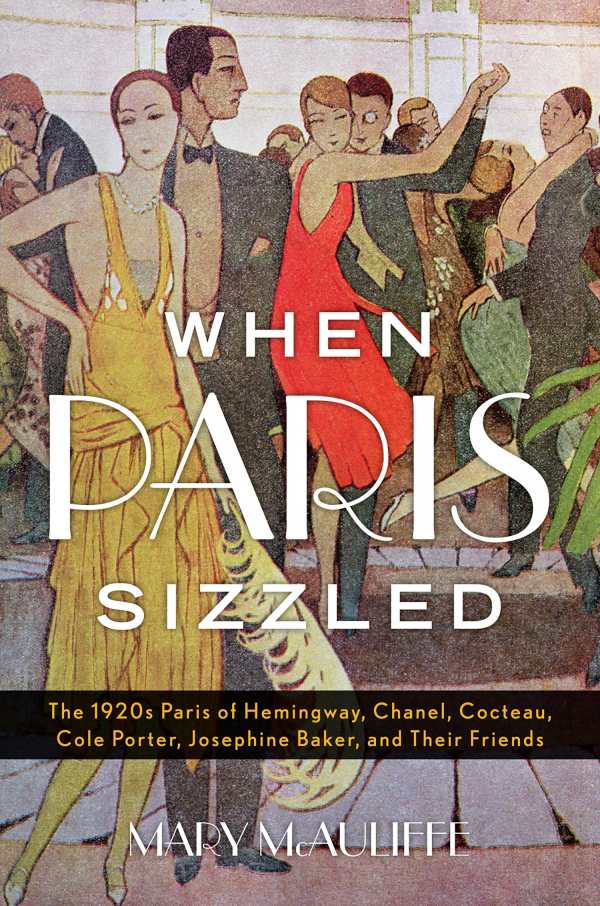When Paris Sizzled
The 1920s Paris of Hemingway, Chanel, Cocteau, Cole Porter, Josephine Baker, and Their Friends
This book proves to be a cornucopia of delights, and a vibrant presentation of the frenzy and hoopla that characterized Paris in the 1920s.
When Paris Sizzled is a cultural historian’s foray into Parisian lore and culture. Mary McAuliffe favors a pointillist approach to cultural history, serving up snapshots of the many colorful artists, designers, and other celebrities who made Paris “sizzle” during the 1920s. The depth of research—and the range of interests—evident here is striking.
“The mauve-colored romanticism of prewar days had disappeared in the shock of aerial bombardment and mustard gas,” McAuliffe writes of the period, and disillusionment drove Parisians. Theirs was a generation of men and women forged by the horrors of the First World War. Among the artists and writers on the scene were Hemingway, Jean Cocteau, Josephine Baker, Cole Porter, Stravinsky, Proust, and Gertrude Stein. The soon-to-be-legendary architect Le Corbusier was present, as well as the industrialist André Citroën and pioneering automaker Louis Renault, who both “emerged from the war as industrial titans, even wealthier and more successful than before.” The need to inhabit every moment to its fullest reigned.
By cataloguing the antics, obsessions, and at times self-destructive impulses of these and other prominent figures, McAuliffe paints a deft portrait of a place and time suffused with creative desperation. “The frivolity and excesses of les années folles” was, she notes, “a natural response to death and destruction, whether as a kind of doom-infused escapism or simply a desire to have fun.” The cultural epoch of Paris in the 1920s reverberates down to our present era, ranging in pursuits as diverse as architecture and fashion to modern music and literature.
When Paris Sizzled follows this wide cast of characters year by year, many of them depicted in brief anecdotal fashion. The cumulative effect of this narrative strategy is considerable, though at times it is challenging to keep track of key individuals.
This book proves to be a cornucopia of delights, and a vibrant presentation of the frenzy and hoopla that characterized Paris in the 1920s.
Reviewed by
Lee Polevoi
Disclosure: This article is not an endorsement, but a review. The publisher of this book provided free copies of the book to have their book reviewed by a professional reviewer. No fee was paid by the publisher for this review. Foreword Reviews only recommends books that we love. Foreword Magazine, Inc. is disclosing this in accordance with the Federal Trade Commission’s 16 CFR, Part 255.

